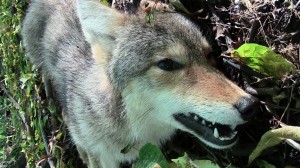Michigan Approves Year-round Coyote Hunting
By Glen Wunderlich
With Michigan’s deer numbers on the decline and our coyote population on the rise, our Natural Resources Commission (NRC) has taken a bold step to combat this disappointing trend by lifting protections on coyotes. Effective immediately, coyote hunting season is open year-round in Michigan, thus bringing us in line with other states in the Midwest region. In addition, raccoons, opossums, foxes and coyotes now may be taken at night with number 3 and 4 buckshot.
Nighttime furbearers can be taken with a bow and arrow, crossbow, a rimfire firearm .22 caliber or smaller, or a shotgun with loads other than buckshot larger than number 3, slug or cut shell. Centerfire rifles still may not be used to take furbearers at night.
These refreshing changes to common-sense game management tools couldn’t come at a more appropriate time, insofar as Michigan’s new crop of fawns will begin to be born at any time. It is the first 10 days of a fawn’s life, when fawns are most vulnerable to predators and when coyotes do the most damage to our deer herd.
A newborn fawn’s only defense against attack is to remain motionless, while it instinctively calms its heartbeat from 175 beats per minute to about 60 beats. The slower and deeper breathing has the effect of reducing airborne scent in an effort to remain “invisible” to predators’ noses.
Often, humans will encounter newborn fawns bedded, because that’s what they do for some 95 percent of the first 10 days or so. It’s important to understand that the mother doe has not abandoned her offspring, but will return to nurse her fawns during the day. If ever we should adopt a hands-off policy for wildlife, it is at this precarious time in the life of a deer.
However, spring is also the time that mated pairs of coyotes are not only feeding themselves but 4 to 7 of their pups. Opportunistic coyotes are omnivorous and will eat about anything including small mammals, plants, and insects. Defenseless fawns, however, are always on the spring menu.
If you choose to hunt coyotes, here are the remaining rules to keep in mind.
*Dogs may not be used to hunt coyotes April 16 through July 7.
*Nighttime hunting season dates now match the daytime hunting season dates by species. No longer do we have conflicting dates just because we may choose to hunt at night.
*Portable artificial lights may be used throughout the open nighttime season of the target species.
*Nighttime hunters must use the aid of a game or predator call and/or dogs while hunting at night. Dogs may not be used from April 16 through July 7. While hunting with dogs at night, a firearm, crossbow or bow and arrow may be loaded at the point of kill only.
*To hunt coyotes, Michigan residents must have a valid base license, and nonresidents must have a valid base license and a valid fur harvester license. Residents hunting other furbearing species will need a base license and a fur harvester license.
* A license or written permit is not needed. Raccoons and coyotes may be taken all year on private property by a property owner or designee when the raccoons or coyotes are doing or about to do damage to private property.
I am left with one wish: to learn the difference between a coyote with good intentions and one determined to do damage. For now, I’ll have to be content with some head scratching.







